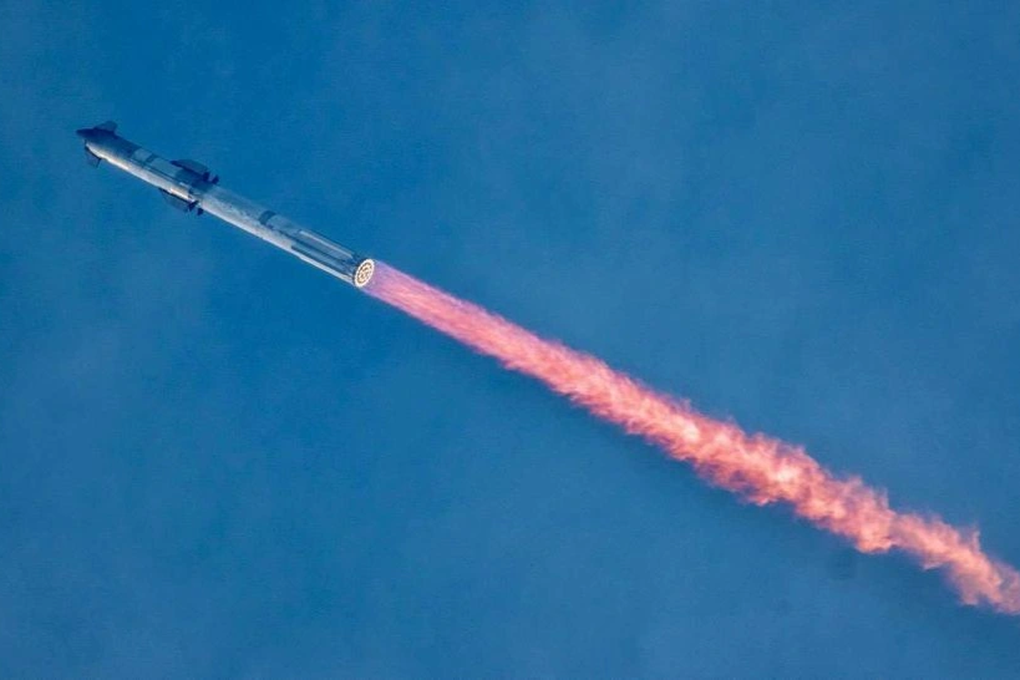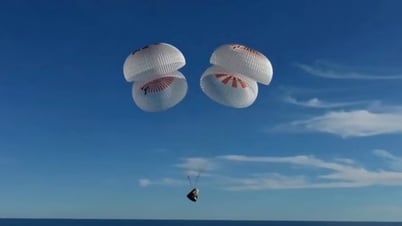
The Starship rocket successfully launched at the SpaceX Test Launch Facility, near Boca Chica Beach, Texas, USA (Photo: SpaceX).
In the third rocket test launch on the evening of March 14 (Vietnam time), SpaceX successfully launched the "super rocket" Starship from the launch pad and into space.
"Starship has reached orbital velocity," SpaceX founder Elon Musk announced on Twitter. "Congratulations SpaceX."
Elon Musk added that this success was even more meaningful, as the launch took place on the 22nd anniversary of SpaceX's founding.
The launch was the third operational test mission (IFT-3) for the Starship rocket. In both previous attempts, the rocket failed to launch, and even exploded during operation, causing serious damage to the launch site.
But thanks to the experience accumulated after 2 launches, the super rocket Starship can now be successfully launched into the sky.
For this launch, SpaceX engineers made a number of modifications and improvements, especially to the rocket's second stage. The main purpose was to improve the Starship's robustness, performance, and efficiency.

The successful rocket test launch promises to open a new era for SpaceX (Photo: SpaceX).
Specifically, the Starship rocket has added "bell-shaped" navigation deflectors, adjusted vents in the methane and liquid oxygen tank area, as well as aesthetic changes to the heat shield.
Along with that, some components were removed and many other details were modified, but the overall structure of the rocket remained unchanged.
For the Super Heavy booster (the rocket's first stage), there have also been minor adjustments including minor design modifications to improve performance and allow the rocket to carry an additional propellant load. Additionally, new Starlink terminals (connections and signal transmission) have been installed on this stage.
The completion of the test flight orbit marks an important milestone for the Starship system in particular, and the US aviation industry in general.
Because this is the rocket that will be used for NASA's Artemis 3 mission, which aims to put humans on the Moon for the first time in 50 years since the historic Apollo mission.
Artemis 3 is expected to launch in 2026. This means the Starship rocket will have less than two years to meet NASA's rigorous vehicle standards and reach a historic milestone.

The Starship rocket is expected to make human's ambition to settle on Mars a reality (Photo: Getty).
According to SpaceX's announcement, in this test, the Starship rocket flew significantly further than previous tests, making a journey through low Earth orbit, but encountered a problem during the return to Earth.
The spacecraft launched by the rocket then lost contact, likely burning up or breaking up during re-entry into the atmosphere or falling into the ocean.
Currently, Starship is the largest and most powerful rocket in the world at the present time, with a height of 122 meters, a mass of 5,000 tons, equipped with 33 Raptor and Raptor Vacuum engines, with the ability to burn liquid methane fuel and liquid oxygen contained in the tank.
The Starship rocket will initially be aimed at launching satellites. Later, it will serve space tourists and send astronauts to the Moon as part of the Artemis program.
In the more distant future, the rocket is expected to make SpaceX's ambition of settling on Mars a reality, while also carrying out intercontinental flights on Earth.
Source




![[Photo] Vietnam and Sri Lanka sign cooperation agreements in many important fields](https://vphoto.vietnam.vn/thumb/1200x675/vietnam/resource/IMAGE/2025/5/5/9d5c9d2cb45e413c91a4b4067947b8c8)































































































Comment (0)